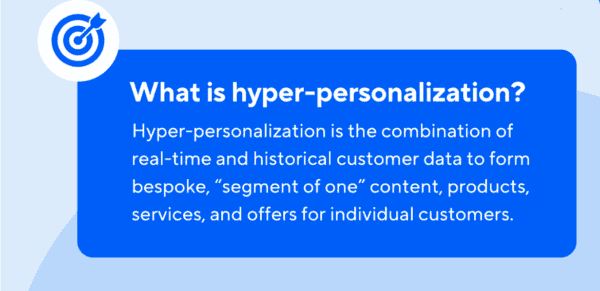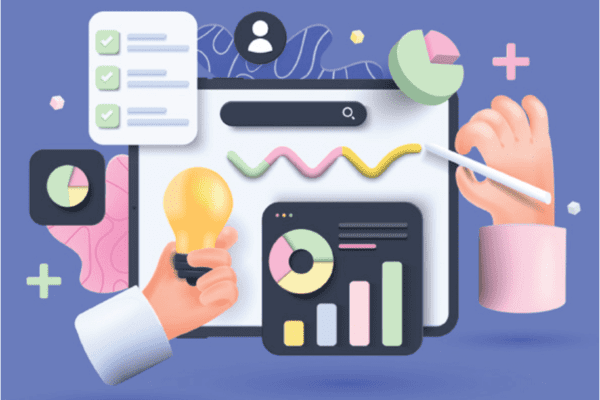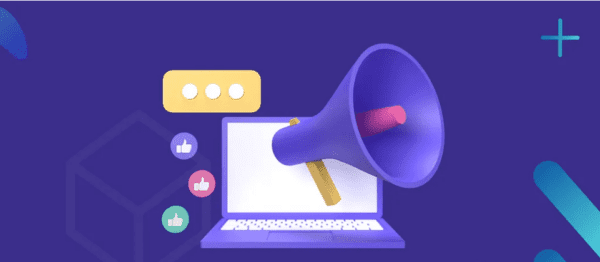Hyper-personalization is a marketing strategy that tailors your messaging and content to individual users based on their unique interests, behaviours, and preferences. By leveraging data and artificial intelligence, edtech companies can create highly personalized experiences tailored to each user’s needs. This can help to increase engagement, improve retention rates, and ultimately drive more revenue for your business.
If you’re involved in education technology, you’re likely well aware of the importance of marketing. Edtech marketing is crucial to reaching your target audience and ensuring they know about your products and services. But in today’s world, traditional marketing tactics may not be enough. That’s where hyper-personalization comes in.
In the world of edtech, hyper-personalization is becoming increasingly important. With so many products and services available, standing out from the crowd can be difficult. By leveraging hyper-personalization techniques, you can create a more engaging and practical learning experience to help you differentiate yourself from your competitors. Whether you’re looking to attract new users, retain existing ones, or provide a better overall experience, hyper-personalization is a strategy that’s well worth considering.

The Rise of Hyper-Personalization in EdTech Marketing
In recent years, the concept of hyper-personalization has become increasingly popular in the field of marketing, and EdTech is no exception. This advanced marketing strategy involves leveraging customer and real-time data to provide tailored experiences to individual customers. In this section, we will explore the definition of hyper-personalization, its benefits to EdTech companies, and the challenges and considerations of implementing it.
Defining Hyper-Personalization
Hyper-personalization is a marketing strategy that uses customer data to provide an individualized experience to each customer. This can include personalized content, products, and services tailored to each customer’s needs and preferences. This approach goes beyond traditional personalization, which typically involves segmenting customers into broad groups based on demographic or behavioural data.
Hyper-personalization relies heavily on data and analytics to identify patterns and trends in customer behaviour. This data can then be used to create predictive models that anticipate customer needs and preferences. Artificial intelligence (AI) and machine learning often automate this process, allowing EdTech companies to deliver personalized content and experiences at scale.

Benefits of Hyper-Personalization in EdTech
Hyper-personalization offers several benefits to EdTech companies. Companies can increase engagement and retention rates by providing tailored experiences to individual customers. This is particularly important in the highly competitive EdTech market, where customer loyalty is critical to long-term success.
Hyper-personalization also allows EdTech companies to understand their customers and their needs better. By analyzing customer data and developing new products and services that better meet customer needs, companies can identify gaps in their offerings and stay ahead of the competition, remaining relevant in a rapidly changing market.
Challenges and Considerations
While hyper-personalization offers many benefits, it also presents several challenges and considerations. One of the biggest challenges is the need for high-quality data. Hyper-personalization relies heavily on customer data, and companies must ensure that this data is accurate and up-to-date. This can be challenging, mainly when dealing with large volumes of data.
Another consideration is the need for transparency. Customers are increasingly concerned about how their data is being used, and companies must be transparent about their data collection and usage practices. This can be challenging, mainly when dealing with sensitive data such as student records.
Finally, companies must be mindful of the ethical considerations of hyper-personalization. While hyper-personalization can provide many benefits to customers, it also raises concerns about privacy and the potential for misuse of data. Companies must ensure that they are using customer data responsibly and ethically.
Hyper-personalization is an increasingly popular marketing strategy in the EdTech industry. By leveraging customer and real-time data, companies can provide tailored experiences to individual customers, increasing engagement and retention rates. However, companies must also be mindful of the challenges and considerations of implementing hyper-personalization, including the need for high-quality data, transparency, and ethical considerations.

Data-Driven Strategies for Personalized EdTech Marketing
As the edtech industry grows, providing personalized customer experiences becomes increasingly essential. One way to achieve this is through data-driven marketing strategies. This section will explore how leveraging customer data for segmentation, real-time analytics, personalized content, and AI and machine learning in campaigns can help you create effective customized marketing campaigns.
Leveraging Customer Data for Segmentation
Data collection is the foundation of any data-driven marketing strategy. By collecting data on your customers’ behaviour, preferences, and interests, you can create targeted campaigns that resonate with them. One way to do this is through segmentation. By dividing your customer base into smaller groups based on common characteristics, you can tailor your marketing messages to each group’s unique needs and interests. For example, you can segment your customers on your website based on their age, location, interests, or behaviour.
Real-time analytics and Personalized Content
Real-time analytics can help you understand your customers’ behaviour and preferences in real-time. By tracking their interactions with your website, you can identify patterns and trends that can inform your marketing strategy. This data can be used to create personalized content that resonates with your customers. For example, you can use real-time analytics to identify the pages on your website that are most popular among your customers and create similar content.

AI and Machine Learning in Campaigns
Artificial intelligence and machine learning can help you take your personalized marketing campaigns to the next level. By analyzing large sets of data, AI and machine learning algorithms can identify patterns and trends that are not immediately apparent to humans. This data can be used to create personalized campaigns that are more effective than traditional marketing campaigns. For example, using AI and machine learning, you can create customized emails tailored to each customer’s unique needs and interests.
Data-driven marketing strategies can help you create effective personalized marketing campaigns in the edtech industry. By leveraging customer data for segmentation, using real-time analytics and personalized content, and incorporating AI and machine learning in campaigns, you can create campaigns that resonate with your customers and drive engagement.
Designing Personalized Customer Journeys in EdTech
Regarding marketing in the EdTech industry, hyper-personalization is the key to success. By designing personalized customer journeys, you can create a unique and engaging experience for your customers that will keep them returning for more. This section will discuss the various aspects of designing personalized customer journeys in EdTech.
Mapping the Customer Experience

Mapping the customer experience is an essential step in designing personalized customer journeys. By understanding your customer’s needs, preferences, and behaviours, you can create a tailored experience that meets their unique requirements. You can use customer journey maps to visualize the various touchpoints that a customer has with your brand, from initial awareness to post-purchase support. This will help you identify areas where you can personalize the experience, such as targeted messaging, personalized offers, and customized learning paths.
Engagement through Personalized Offers
Engagement is critical to the success of any marketing campaign, and personalized offers are an effective way to increase engagement in EdTech. You can encourage your customers to take action and engage with your brand by offering customized discounts, promotions, and incentives. You can use data analytics to identify the products and services your customers are most interested in and create personalized offers tailored to their needs.
The Role of AR in Learning Experiences
Augmented reality (AR) is an emerging technology with the potential to revolutionize learning. By incorporating AR into your learning experiences, you can create a more immersive and engaging experience for your customers. AR can be used to create interactive learning environments, gamify the learning experience, and provide personalized feedback to students. By leveraging AR, you can create a unique and customized learning experience to motivate your customers.
In conclusion, designing personalized customer journeys is essential for marketing success in EdTech. By mapping the customer experience, offering customized incentives, and incorporating AR into your learning experiences, you can create a unique and engaging experience that will keep your customers returning for more.

Optimizing Conversion and Retention with Hyper-Personalization
Hyper-personalization is a powerful marketing strategy that can help edtech companies improve conversion rates and enhance customer loyalty. By delivering personalized experiences to individual customers, you can create a competitive edge in the crowded edtech market. This section will explore how hyper-personalization can help you optimize conversion and retention rates.
Improving Conversion Rates with Targeted CTAs
One of the most effective ways to improve conversion rates is using targeted calls-to-action (CTAs). You can increase the likelihood of conversion by tailoring your CTAs to your customer’s specific needs and interests. For example, if a customer has shown interest in a particular course or program, you can use a CTA that highlights the benefits of that course or program. You can also use personalized CTAs based on the customer’s location, device, or previous interactions with your website.
Enhancing Customer Loyalty and Retention
Hyper-personalization can also help you enhance customer loyalty and retention. You can create a deeper emotional connection with them by delivering personalized experiences that meet your customer’s unique needs and preferences. This can lead to increased customer satisfaction, loyalty, and retention. For example, you can use personalized emails, notifications, or in-app messages to keep your customers engaged and informed about new courses or programs that match their interests.
Measuring ROI of Personalized Marketing

To measure the ROI of your personalized marketing campaigns, you need to track key metrics such as conversion rates, retention rates, and revenue. Analyzing these metrics lets you identify the most effective personalized experiences and adjust your strategy accordingly. You can also use A/B testing to compare the performance of different personalized experiences and optimize your campaigns for maximum ROI.
Hyper-personalization is a powerful marketing strategy that can help edtech companies optimize conversion and retention rates. By using targeted CTAs, enhancing customer loyalty, and measuring the ROI of your personalized marketing campaigns, you can create a competitive edge in the edtech market.
Ethical Considerations and Best Practices
Hyper-personalization is a powerful tool in marketing and edtech, but it must be used responsibly. Here are some ethical considerations and best practices to keep in mind:
Data Privacy and User Consent
One of the key ethical considerations in hyper-personalization is data privacy. To maintain the trust of your customers and users, it’s essential to be transparent about what data you are collecting and how it will be used. Ensure you have a clear privacy policy that explains this information in plain language and allows users to opt out of data collection.
When collecting customer data, obtaining explicit consent from the user is essential. This means you must clearly explain what data you are ordering and how it will be used, allowing the user to opt out of data collection. This includes personal information like name and email address and behavioural data like browsing history and search queries.
Maintaining Authenticity in Personalization

Another essential consideration in hyper-personalization is maintaining authenticity. While personalization can be a powerful tool for building relationships with customers and users, avoiding crossing the line into manipulation or deception is essential.
To maintain authenticity, ensure your personalization efforts are based on accurate and relevant data. Don’t use personalization to push products or services the user doesn’t need or want. Instead, use personalization to provide relevant content and recommendations to benefit the user.
In addition, make sure that your personalization efforts are transparent and clearly labelled as such. Don’t try to pass off personalized content or recommendations as generic or unbiased. Instead, be upfront about the customized content and explain how and why it was chosen for the user.
By following these ethical considerations and best practices, you can use hyper-personalization responsibly and effectively, building trust and relationships with your customers and users.
